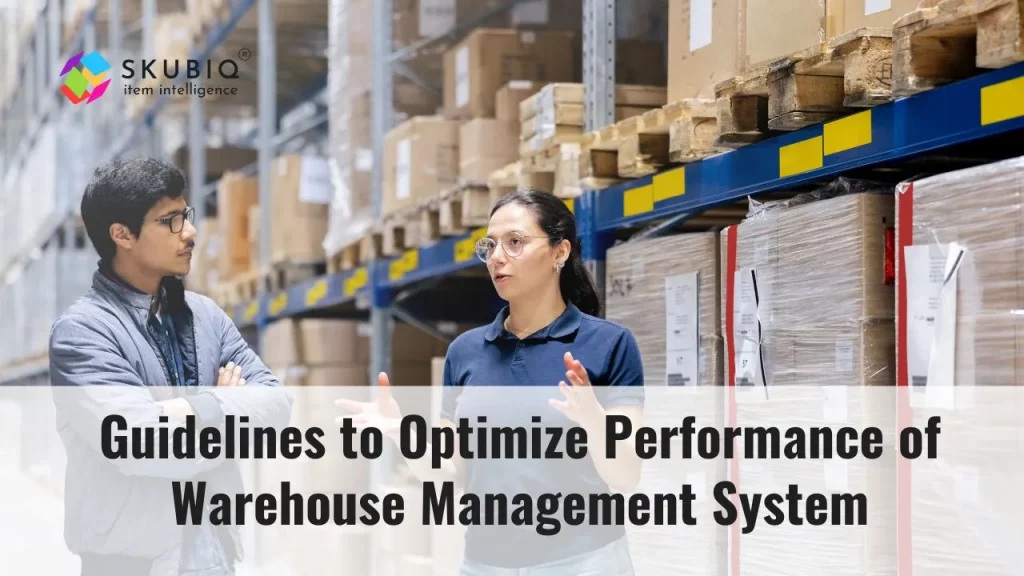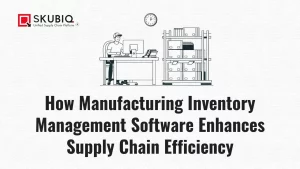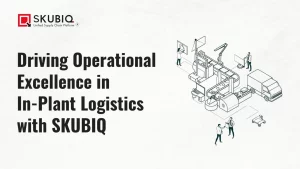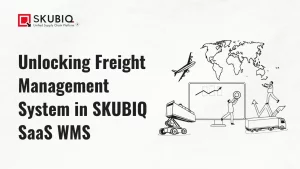Optimizing the performance of a Warehouse Management System (WMS) is crucial for ensuring efficient warehouse operations, reducing costs, and improving customer satisfaction. An effective WMS can streamline processes, enhance inventory accuracy, and boost overall productivity. This article provides comprehensive guidelines to help you optimize your WMS performance.
Understanding Your Warehouse Management System
1. What is a Warehouse Management System?
A Warehouse Management System (WMS) is software designed to support and optimize warehouse operations. It manages inventory, tracks shipments, and streamlines order fulfillment processes, ensuring that goods move through the warehouse efficiently.
2. Key Functions of a WMS
Key functions of a WMS include inventory management, order picking, packing, shipping, and real-time data reporting. These functions help in maintaining accurate inventory levels, reducing order processing times, and improving overall warehouse efficiency.
3. Importance of Optimizing WMS
Optimizing your WMS is vital for maximizing warehouse efficiency, minimizing errors, and ensuring timely order fulfillment. A well-optimized WMS can significantly enhance productivity, reduce operational costs, and improve customer satisfaction.
Assessing Current Performance
1. Conducting a Performance Audit
The first step in optimizing your WMS is to conduct a performance audit. This involves evaluating your current system’s performance, identifying bottlenecks, and pinpointing areas that need improvement.
2. Identifying Bottlenecks
Identifying bottlenecks is crucial for optimization. Common bottlenecks include slow order processing, inaccurate inventory counts, and inefficient picking and packing processes. Addressing these issues can significantly improve WMS performance.
3. Evaluating User Feedback
Gathering feedback from warehouse staff who use the WMS daily can provide valuable insights into its strengths and weaknesses. Their input can help identify practical issues and areas for improvement.
Enhancing System Configuration
1. Optimizing System Settings
Review and optimize your WMS settings to ensure they align with your warehouse operations. This includes adjusting parameters for order picking, inventory tracking, and replenishment processes to enhance efficiency.
2. Customizing Workflows
Customizing workflows within your WMS to match your specific warehouse processes can improve efficiency. Tailored workflows can streamline operations, reduce errors, and enhance overall productivity.
3. Utilizing Advanced Features
Make full use of advanced WMS features such as automated picking, real-time inventory tracking, and advanced reporting tools. These features can provide significant efficiency gains and improve overall system performance.
Improving Data Accuracy
1. Implementing Barcode Scanning
Implementing barcode scanning can significantly enhance data accuracy in your WMS. Barcode scanning reduces manual entry errors, improves inventory tracking, and speeds up order processing.
2. Regular Inventory Audits
Conducting regular inventory audits helps ensure that your WMS data remains accurate. Regular audits can identify discrepancies early, allowing for prompt correction and maintaining data integrity.
3. Real-time Data Updates
Ensure that your WMS updates data in real-time. Real-time updates provide accurate and up-to-date information, enabling better decision-making and improving overall warehouse efficiency.
Streamlining Order Fulfillment
1. Optimizing Picking Routes
Optimize picking routes within your warehouse to reduce travel time and increase picking efficiency. Efficient picking routes can significantly reduce order fulfillment times and improve overall productivity.
2. Batch Picking
Implementing batch picking can enhance order fulfillment efficiency. Batch picking allows multiple orders to be picked simultaneously, reducing travel time and increasing picking accuracy.
3. Automating Packing Processes
Automating packing processes can reduce manual labor, minimize errors, and speed up order fulfillment. Automated packing solutions can also ensure consistent packaging quality.
Leveraging Technology Integration
1. Integrating with ERP Systems
Integrate your WMS with your Enterprise Resource Planning (ERP) system to ensure seamless data flow and improve overall efficiency. Integration with ERP systems can enhance inventory management, order processing, and reporting capabilities.
2. Utilizing IoT Devices
Utilize Internet of Things (IoT) devices for real-time tracking of inventory and equipment within the warehouse. IoT devices can provide valuable data, enabling better decision-making and optimizing warehouse operations.
3. Adopting AI and Machine Learning
Adopt AI and machine learning technologies to enhance WMS performance. AI and machine learning can provide predictive analytics, optimize inventory management, and improve overall efficiency.
Training and Empowering Staff
1. Providing Comprehensive Training
Provide comprehensive training for warehouse staff on using the WMS effectively. Well-trained staff can maximize the system’s capabilities, reduce errors, and improve overall efficiency.
2. Encouraging Continuous Learning
Encourage continuous learning and development for warehouse staff. Keeping staff updated with the latest WMS features and best practices can enhance performance and productivity.
3. Empowering Staff with Decision-Making
Empower staff with decision-making capabilities by providing them with real-time data and insights. Enabling informed decision-making can improve responsiveness and overall efficiency.
Monitoring and Continuous Improvement
1. Setting Performance Metrics
Set clear performance metrics to monitor the effectiveness of your WMS. Key metrics might include order fulfillment times, inventory accuracy, and picking efficiency. Regularly reviewing these metrics can help identify areas for improvement.
2. Regular System Reviews
Conduct regular reviews of your WMS to ensure it continues to meet your operational needs. Regular reviews can help identify any issues early and ensure the system remains optimized.
3. Implementing Continuous Improvement Practices
Implement continuous improvement practices to ensure ongoing optimization of your WMS. Regularly assess and refine processes to maintain efficiency and adapt to changing operational needs.
Ensuring Scalability and Flexibility
1. Scalability of the System
Ensure your WMS can scale with your business growth. A scalable WMS can handle increased order volumes, expanded product lines, and additional warehouse locations without compromising performance.
2. Flexibility to Adapt
Choose a WMS that offers flexibility to adapt to changing business needs and market conditions. A flexible system can accommodate new workflows, integrate with emerging technologies, and support evolving operational requirements.
3. Future-Proofing with Technology
Future-proof your WMS by adopting technologies that are likely to remain relevant and beneficial in the long term. Stay informed about industry trends and advancements to ensure your WMS stays ahead of the curve.
Conclusion
Optimizing the performance of your Warehouse Management System is crucial for ensuring efficient warehouse operations, reducing costs, and improving customer satisfaction. By following these guidelines, you can enhance your WMS’s performance, streamline operations, and achieve greater productivity. Continuous monitoring, regular reviews, and staying updated with the latest technologies are key to maintaining an optimized WMS.
FAQs (Frequently Asked Questions)
1. What are the benefits of optimizing a Warehouse Management System?
Optimizing a WMS can lead to improved efficiency, reduced errors, cost savings, better inventory management, and enhanced customer satisfaction.
2. How can barcode scanning improve WMS performance? d?
Barcode scanning improves data accuracy by reducing manual entry errors, speeds up order processing, and enhances inventory tracking.
3. Why is real-time data important in a WMS?
Real-time data provides accurate, up-to-date information, enabling better decision-making, reducing errors, and improving overall efficiency.
4. How can AI and machine learning enhance WMS performance?
AI and machine learning can provide predictive analytics, optimize inventory management, improve picking efficiency, and enhance overall system performance.
5. What should be considered when integrating a WMS with an ERP system?
When integrating a WMS with an ERP system, consider data flow consistency, compatibility, ease of integration, and the potential for improved efficiency and reporting capabilities.



